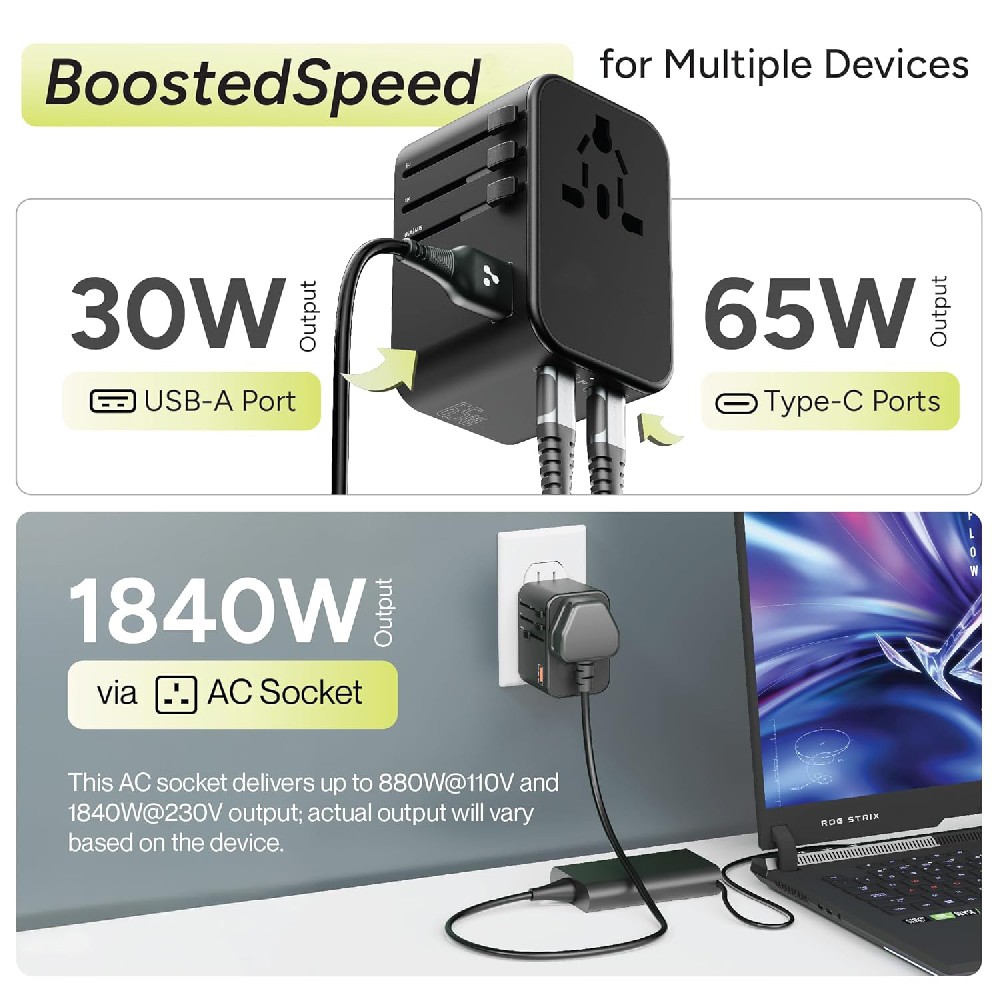Industry news
The Evolution of Travel Adapters: From Simple to Smart
Writer: admin Time:2025-07-13 18:07:30 Browse:230℃
In the 1990s, a typical travel adapter weighed over 200 grams and covered just 10-15 countries. Now, top models weigh under 100 grams and work in 150+ nations. This evolution mirrors the rise in global travel—from 600 million international trips in 2000 to 1.4 billion in 2019 (before the pandemic), according to the World Tourism Organization.

Understanding Voltage: A Critical Companion to Travel Adapters
How to Maintain and Extend the Life of Your Travel Adapter
Clean prongs regularly with a dry cloth to remove dust and debris.
Avoid bending prongs—never force the adapter into a tight outlet.
Store it in a hard case to prevent damage during travel.
Unplug it by pulling the adapter, not the cord, to avoid internal damage.
Travel Adapter Myths Debunked
Comparing Popular Travel Adapter Brands: A Detailed Look
| Brand | Countries Covered | USB Ports | Surge Protection | Price Range |
| Ceptics | 150+ | 4 (2 USB-A, 2 USB-C) | Yes | \(25-\)40 |
| BESTEK | 160+ | 3 (1 USB-C, 2 USB-A) | Yes | \(30-\)50 |
| Epicka | 150+ | 5 (3 USB-A, 2 USB-C) | No | \(20-\)35 |
| Belkin | 100+ | 2 (USB-A only) | Yes | \(15-\)25 |
When to Replace Your Travel Adapter: Warning Signs
Prongs are bent, cracked, or loose.
The adapter feels hot during use (more than slightly warm).
USB ports are loose—cables fall out easily.
It no longer fits snugly in outlets.
Advanced Tips: Using Travel Adapters in Remote Locations
Frequently Asked Questions About Travel Adapters (Extended)
Can I use a travel adapter on a cruise ship?
Yes, but check the ship’s guidelines. Many cruise lines allow basic adapters but ban those with surge protection, which can interfere with ship systems.
Do travel adapters work with power strips?
Yes, but be cautious. Connecting a power strip to a travel adapter lets you charge multiple devices, but avoid high-wattage items like hair dryers to prevent overloading.
What’s the best travel adapter for digital nomads?
Digital nomads need adapters with USB-C ports (for laptops) and surge protection. The Ceptics World Travel Adapter is ideal—it covers 150+ countries and charges 6 devices at once.
CATEGORIES
LATEST NEWS
- What are the differences in plugs (chargers) among countries around the world?
- Answers to frequently asked questions by customers
- Worldwide Plug Adapter with Fast Charging for Singapore South Korea
- The Ultimate Universal Travel Adapter with USB-C for Business Trips
- Choosing a Travel Plug Adapter for Germany France Business Trips
CONTACT US
WhatsApp: xxxxxx
Phone: 18128986700
Email: zhozuoplug@hotmail.com
Add: Dongguan City, Guangdong Province, China